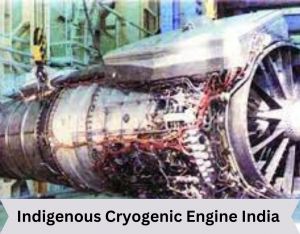ForumIAS announcing GS Foundation Program for UPSC CSE 2025-26 from 27th May. Click Here for more information.
Source: This post on the Implications of India’s Indigenous Cryogenic Engine has been created based on the article “Next stage – Indigenous cryogenic engine lift-off for India’s space programme” published in “Business Standard” on 22nd February 2024.
UPSC Syllabus Topic: GS Paper 3 Science & Technology – Awareness in the fields of Space.
News: The article discusses the recent launch of Insat-3DS by ISRO. It also discusses the various applications of Indigenous Cryogenic Engine India.
Background:
Recently, 3rd-generation weather satellite Insat-3DS was launched by Indian Space Research Organisation (ISRO).
Why was this significant?
- Enhances India’s weather-prediction abilities: Insat-3DS offers enhanced coverage of oceans.
- Indigenous Cryogenic Engine Capabilities: The engine, the GSLV F14 rocket with a cryogenic third stage performed as expected. There are only 6 nations, including India, which possess this capability.
What are Cryogenic engines?
Cryogenic engines use mixes of liquefied gases (usually hydrogen and oxygen), which deliver greater thrust to weight. These rockets can carry greater payload at higher speeds (Over 6,000 kg into Low Earth Orbit and over 2,000 kg into higher geostationary orbits).
Liquid hydrogen and oxygen are stored separately at very low temperatures and combust explosively when brought together. These complexities require expertise in design and material sciences.
Read More UPSC Topics-
What are the implications?
- Aerospace implications: Since it can put greater payloads into higher orbits, it would be vital to future missions to the Moon or Mars, setting up a space station, or putting Gaganauts into orbit.
- Military implications:
(i) Material science capabilities can be harnessed in many applications.
(ii) The capacity to put more and larger payloads into space translates into more robust communications, including military communications.
(iii) Modern ballistic missiles with intercontinental ranges generally use semi-cryogenic engines (mix of kerosene and liquid oxygen). Expertise in cryogenic technologies will also make semi-cryogenic R&D easier.
c. Commercial implications: Since it can put larger loads into higher orbits, it will make India a significant player in the global satellite launching business.
Question for practice:
What are Cryogenic engines? What are its applications in the space, military and commercial sector?





